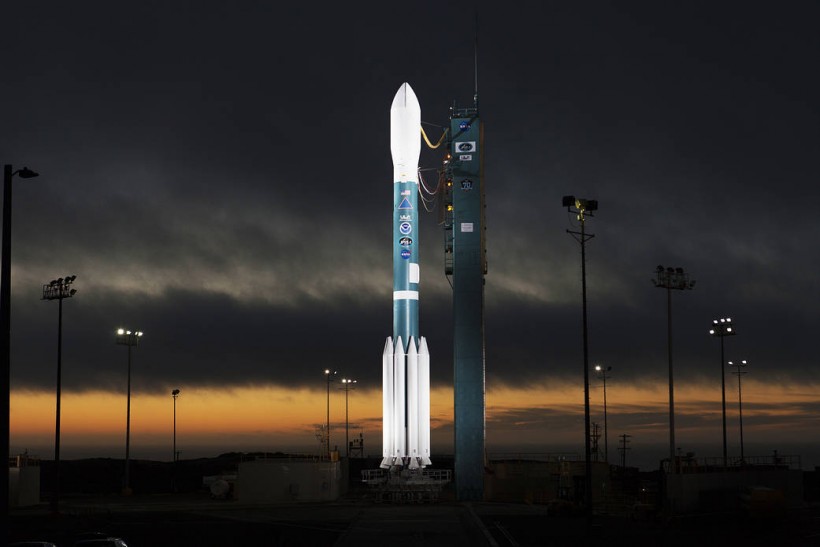On November 10, NASA will launch the Joint Polar Satellite System-2 (JPSS-2), a weather satellite that will observe Earth's weather patterns from orbit. It is worthwhile to wait and observe since the mission will also test a new inflatable heat shield.
An environmental satellite called JPSS-2 will be launched into a polar Earth orbit. The satellite will be launched from the Californian Vandenberg Space Force Base atop an Atlas V rocket by the United Launch Alliance (ULA).

At Vandenberg Air Force Base's Space Launch Complex 2, a United Launch Alliance Delta II rocket stands ready to boost the Joint Polar Satellite System-1, or JPSS-1, spacecraft to orbit. JPSS is the first in a series four next-generation environmental satellites in a collaborative program between NOAA and NASA. JPSS-1 will gather measurements of atmospheric, terrestrial and oceanic conditions, including sea and land surface temperatures, vegetation, clouds, rainfall, snow and ice cover, fire locations, atmospheric temperature, water vapor and ozone. Liftoff is scheduled for 1:47 a.m. PST (4:47 a.m. EST), on Nov. 14, 2017, atop a United Launch Alliance Delta II rocket from Space Launch Complex 2 at Vandenberg Air Force Base in California.
Here's What To Expect About JPSS-2 Weather Satellite Launch
According to Digital Trends, NASA's Low-Earth Orbit Flight Test of an Inflatable Decelerator (LOFTID) mission and the National Oceanic and Atmospheric Administration's (NOAA) JPSS-2 mission will both launch simultaneously.
You may begin watching in the early hours of November 10. At 3:45 a.m. ET, coverage will get underway (12:45 a.m. PT). But the actual launch will begin at 4:25 a.m. ET (1:25 a.m. PT). To watch the launch, go to NASA's YouTube channel.
A ULA Atlas V rocket will be used to launch the weather satellite. The mission will test LOFTID, an experimental piece of NASA technology, in addition to the satellite.
The LOFTID is an inflatable heat shield created to protect the craft from the friction-related heat of reentering the Earth's atmosphere.
Future voyages to other worlds like Mars may benefit from this new NASA technology. It might also be utilized by spacecraft that are returning to Earth.
NASA and NOAA collaborated on the JPSS-2 mission. The two organizations want to launch a brand-new satellite into Earth's polar orbit.
The satellite will enter space and join other NOAA and NASA spacecraft. These satellites are used to track atmospheric measurements as well as weather-related events.
They are quite useful in predicting the weather, especially catastrophic weather events like hurricanes.
ALSO READ: ESA Shows Spooky 'Halloween Crack' of Antarctica's Brunt Ice Shelf [Look]
About Faulty Battery of Atlas V Rocket
According to Space.com, JPSS-2's launch and the new heat shield test were initially slated for last week on November 1.
It was forced to be postponed to November 9 owing to a problem with the Centaur upper stage's battery, though. NASA revealed on Tuesday, November 3, that the launch date had been moved to another day.
According to a NASA blog, the JPSS-2 and LOFTID are both in good condition and prepared for launch. The defective battery has been replaced with one that the experts have activated.
The specialists will switch out and evaluate the battery to make sure the launch goes as planned.
JPSS-2 will be administered by NOAA. It will use five distinct scientific pieces of equipment to investigate Earth from the planet's polar orbit. The data from the satellite will help scientists track the effects of climate change, according to the mission team members.
In the meanwhile, LOFTID will go to the polar orbit aboard an Atlas V rocket. It will then quickly return to Earth while deploying parachutes. It will land with a splash in the Pacific Ocean close to Hawaii.
Researchers will examine LOFTID's performance during the forthcoming test run to assess the viability of inflatable heat shields for the landing of large payloads on other planets.
RELATED ARTICLE: US Air Force Witnesses Spectacular Light Blazes Footage of Spacex's 52 Starlink Satellite Above 37,000 Feet [Look]
Check out more news and information on Space in Science Times.














